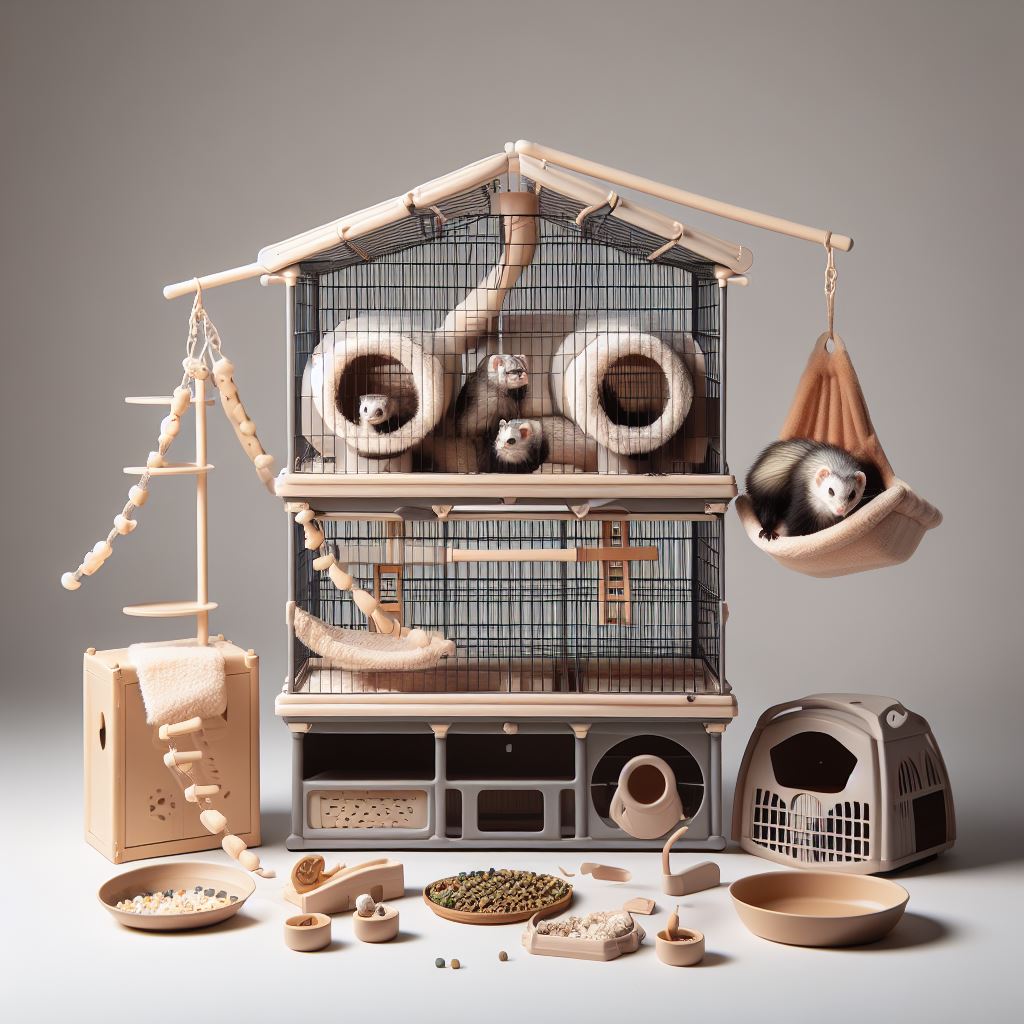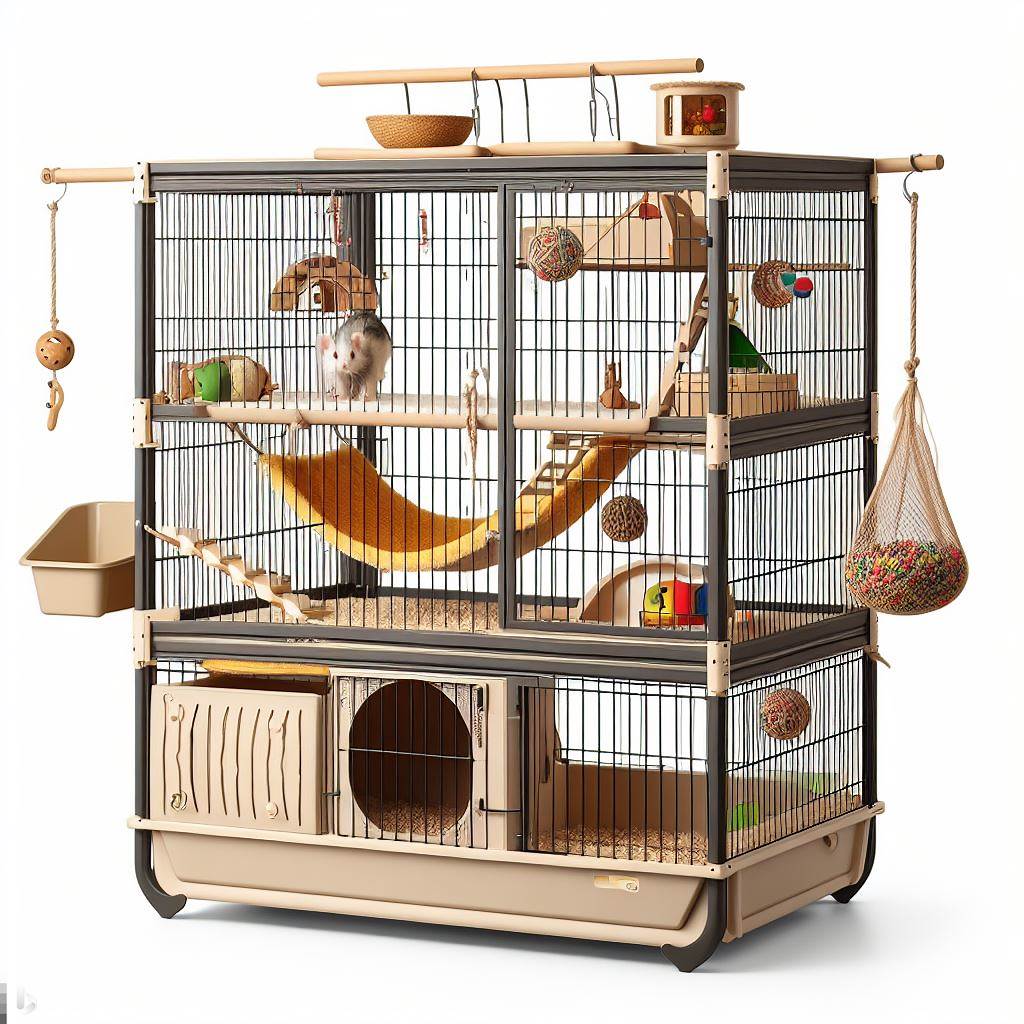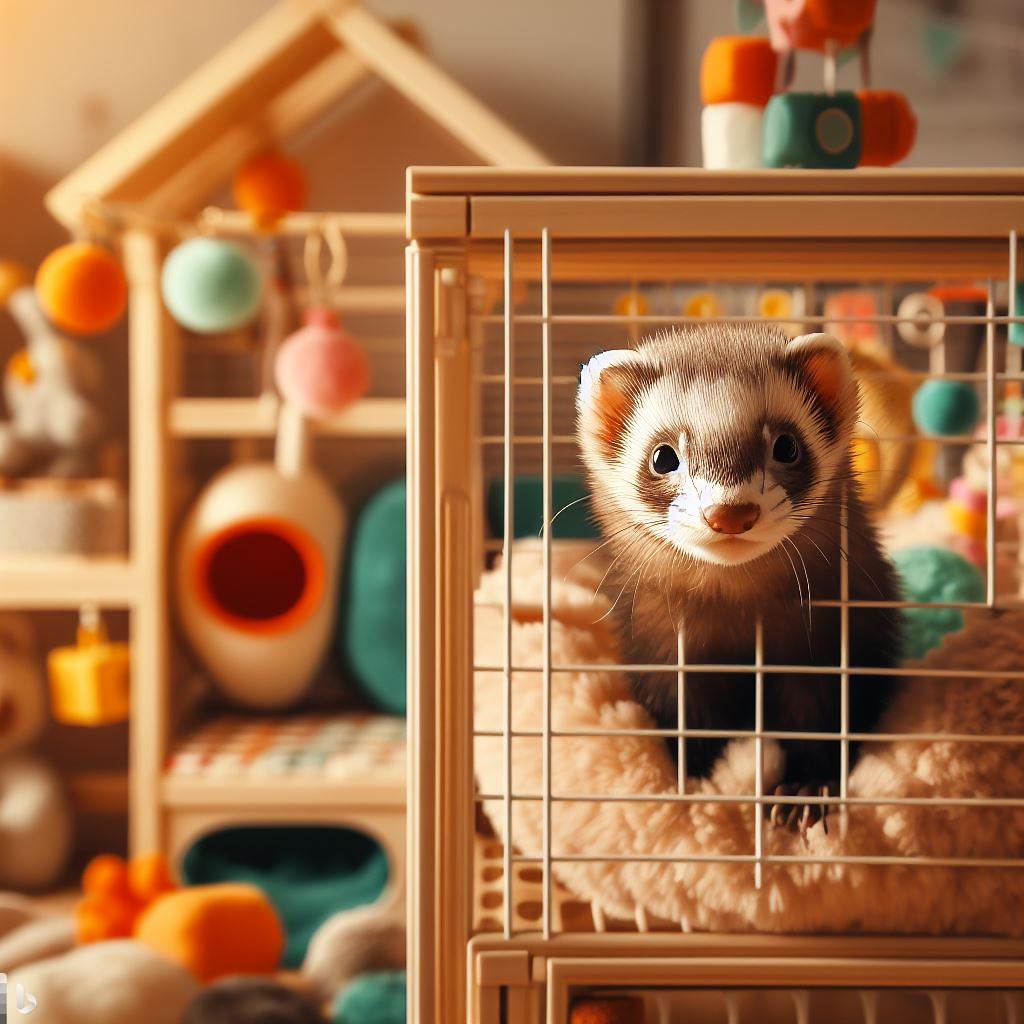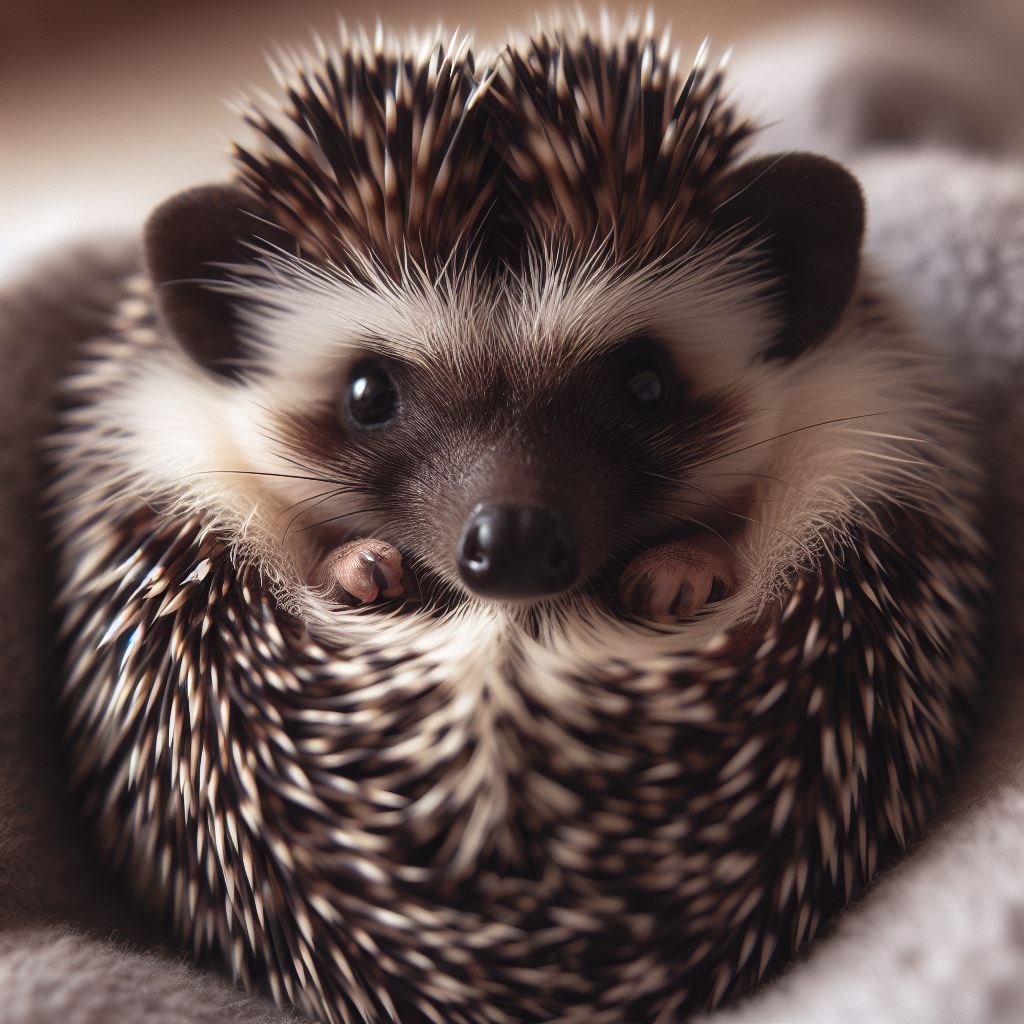When it comes to the care of our furry companions, selecting the right abode is fundamental. A Ferret cage should be a meticulously crafted space that echoes the nuances of their natural habitat and stands as the guardian of their well-being. In this comprehensive guide, we navigate the labyrinth of ferret enclosures, from understanding their behavior to choosing the perfect habitat and dispelling myths. Let’s embark on this journey, ensuring our ferret friends not only have a home but a sanctuary tailored to their instincts.
To design an ideal ferret habitat, one must delve into the innate behaviors of these creatures. Observing their wild counterparts provides profound insights into their need for secure, multi-dimensional spaces that cater to their instinctual tendencies, fostering an environment that mirrors their natural habitat.
Types of Ferret Cages
Within the marketplace, an array of ferret cages awaits discerning owners. Wire, plastic, and multi-level designs each hold distinct advantages. Ventilation, visibility, and security are essential elements. This section delves into the nuanced features of these cages, offering a comprehensive guide for prospective pet parents.
Choosing the Right Ferret Cage Size

The dimensions of the cage directly impact a ferret’s well-being. Height, width, and space for movement are not mere measurements; they are the parameters that define a ferret’s physical and mental freedom. This section meticulously dissects the size requirements, ensuring an enclosure that resonates with the ferret’s inherent need for exploration.
Multi-Ferret Housing Considerations
When ferrets cohabitate, understanding their social dynamics is paramount. Delicate introductions and strategically designed spaces within a shared cage mitigate territorial conflicts, promoting a harmonious environment where socialization flourishes. This section delves into the art of creating a communal space that respects individual boundaries.
Cage-Free Ferret Keeping
For the audacious ferret owner, the concept of cage-free living is a testament to trust and understanding. Ferret-proofing living spaces demands meticulous attention, transforming homes into safe havens where ferrets can roam freely, explore, and express their natural behaviors while ensuring their safety and well-being.
Ferret Cage Accessories
Accessories are the heartbeats of a ferret’s cage, elevating mere enclosures into dynamic habitats. Hammocks, litter boxes, and stimulating toys contribute significantly to a ferret’s mental and physical health. This section examines these accessories not as embellishments, but as essential elements that enhance a ferret’s overall quality of life.
Ferret Sleeping Preferences
Understanding the subtleties of ferret sleep patterns is a gateway to crafting a sanctuary of repose. This section navigates the realm of suitable bedding options, offering insights into the textures and arrangements that align with a ferret’s nocturnal habits, ensuring they find solace within their enclosures.
Social Aspects of Ferret Keeping

Ferrets, by nature, are social creatures, thriving in companionship. This section delves into the delicate balance of socialization, addressing the query of solitary living. By deciphering their communication nuances and social dynamics, this segment provides a roadmap to fostering meaningful ferret interactions.
Sharing Space with Other Animals
Compatibility is the cornerstone when integrating ferrets with other pets. Cats, dogs, and other animals can coexist peacefully if introduced with care and vigilance. This section explores the protocols and safety measures, ensuring a harmonious cohabitation where each pet’s boundaries are respected.
Cage Maintenance and Cleaning
The act of cleaning a ferret’s cage is more than a chore; it’s a commitment to their well-being. Regular maintenance routines are the fortresses against diseases, ensuring a hygienic environment where ferrets can thrive. This section imparts insights into cleaning practices, elevating them to a vital aspect of responsible ferret ownership.
Common Misconceptions about Ferret Cages
In the realm of ferret care, myths and misconceptions abound. This section takes a discerning eye to common fallacies, debunking them with factual information. By shedding light on these misconceptions, this segment serves as a beacon for enlightened ferret ownership.
Addressing Ferret Escape Abilities

Ferrets, with their cunning and curiosity, often challenge the confines of their enclosures. This section explores the nuances of ferret escape strategies, offering strategic methods to secure cages effectively. It’s not merely about barriers; it’s about understanding a ferret’s determination and outsmarting it with ingenuity.
Ferret Nation Cages: Are They Worth It?
The Ferret Nation cages stand as epitomes of luxury and functionality. This section delves into their intricate features, dissecting the investment aspect. Beyond mere pricing, this segment evaluates the enduring value these cages offer, making them not just a purchase, but a legacy for cherished ferret companions.

FAQs (Frequently Asked Questions)
What type of cage is best for a ferret?
Ferrets thrive in multi-level cages with ample space for exploration. Wire cages, particularly those with narrow bar spacing, provide excellent ventilation and security.
Are you supposed to keep ferrets in a cage?
While ferrets need a safe space, they also require regular outside-the-cage time for exercise and socialization. Balancing both is essential for their well-being.
How many ferrets can be in one cage?
It depends on the cage size and the ferrets’ temperament. Generally, one or two ferrets can comfortably cohabitate, but spacious cages allow for more, ensuring they have room to move and play.
Can ferrets open their cage?
Ferrets are clever escape artists. Securing cages with ferret-proof locks is essential to prevent them from opening the doors.
How many hours should a ferret be out of the cage?
Ferrets should have at least 3-4 hours of supervised playtime outside the cage daily to fulfill their exercise and socialization needs.
How long can ferrets stay in a cage?
Ferrets can stay in their cages for several hours, but it’s crucial to provide mental and physical stimulation within the enclosure. Regular playtime outside the cage is essential.
What do ferrets like to sleep in?
Ferrets prefer soft and cozy bedding. Hammocks, fleece-lined beds, or nesting boxes provide them with a sense of security and comfort.
What do ferrets eat?
Ferrets require a high-protein, low-fiber diet. Specialized ferret food or high-quality kitten food meets their nutritional needs. Meaty treats can be offered occasionally.
Can ferrets live alone?
Ferrets are social animals and thrive in the company of their kind. While some adapt to living alone, companionship enhances their quality of life significantly.
What animals can go in a ferret cage?
Compatible animals like other ferrets, certain breeds of cats, and calm small dogs can coexist. Always supervise interactions and provide escape routes.
Can ferrets live without a cage?
With meticulous ferret-proofing, some ferrets can live cage-free, but it demands careful attention to their safety and the removal of potential hazards.
Can ferrets have small cages?
Ferrets need spacious cages to move, play, and exercise. Small cages restrict their natural behaviors, leading to stress and health issues.
Do ferrets like cages?
Ferrets don’t mind cages when they are spacious, well-ventilated, and filled with enriching activities. Cages become their safe havens if designed with their needs in mind.
How many ferrets can fit in a Ferret Nation cage?
Ferret Nation cages are spacious and can accommodate multiple ferrets comfortably. The number depends on the specific size of the cage and the ferrets’ temperament.
Why are Critter Nation cages so expensive?
Critter Nation cages are pricier due to their sturdy construction, durability, and multifunctional designs. The quality materials used and their longevity justify the higher cost.
Are Ferret Nation cages good for rats?
Ferret Nation cages are excellent for rats due to their bar spacing, providing a secure environment. Rats enjoy the vertical space and love to climb and explore.
What type of cage is best for ferrets?
The best ferret cages are spacious, well-ventilated, and multi-level. Wire cages with narrow bar spacing, providing room for play and exploration, are ideal for ferrets’ well-being.
Conclusion
Selecting a ferret cage is not merely an act of providing shelter; it’s a dialogue between a pet parent and their furry companions. It’s about acknowledging their instincts, honoring their needs, and providing an environment where they can flourish. Responsible ferret ownership transcends beyond the physical; it’s a commitment to understanding, empathy, and an enduring bond. As we conclude this journey through ferret cages, we stand not just as caretakers, but as architects of a sanctuary where playful spirits thrive, ensuring a legacy of love and companionship that echoes through the halls of time.






